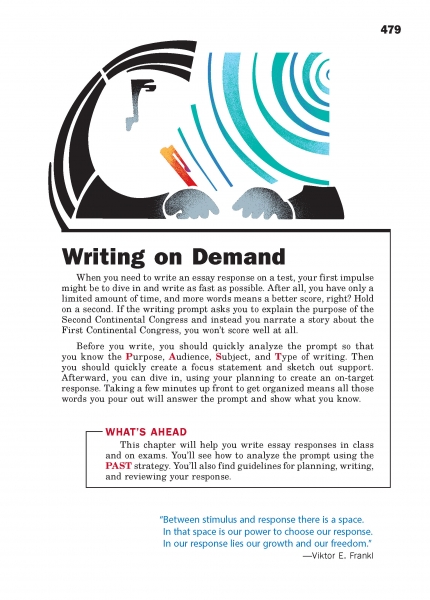Page 479 from

Start-Up Activity
Ask students to name things that they can get "on demand" these days. They may suggest some of the following:
- Movies
- Music
- Games
- Fast food
- Taxi/Uber rides
- Snacks/groceries/drinks
The list goes on. For a product or service to truly be "on-demand," it needs to be ready right away. That's what on-demand writing is—writing that is ready right away. The best way to prepare to write on demand is to write regularly, develop fluency (the ability to write rapidly), and learn a variety of strategies and techniques. In short, students who make writing a habit of mind will do well when asked to write "right away."
Think About It
“Quality is not an act; it is a habit.”
—Aristotle

Start-Up Activity
Ask students to name things that they can get "on demand" these days. They may suggest some of the following:
- Movies
- Music
- Games
- Fast food
- Taxi/Uber rides
- Snacks/groceries/drinks
The list goes on. For a product or service to truly be "on-demand," it needs to be ready right away. That's what on-demand writing is—writing that is ready right away. The best way to prepare to write on demand is to write regularly, develop fluency (the ability to write rapidly), and learn a variety of strategies and techniques. In short, students who make writing a habit of mind will do well when asked to write "right away."
Think About It
“Quality is not an act; it is a habit.”
—Aristotle

